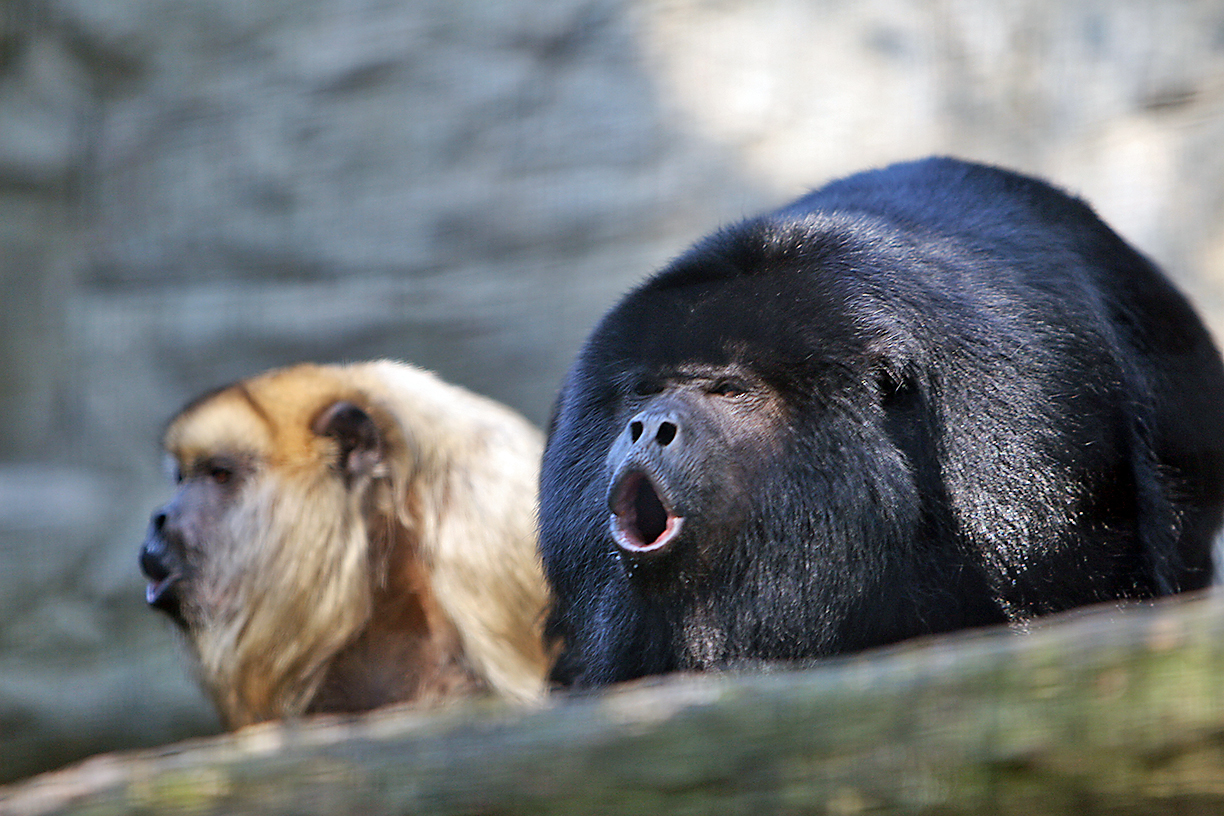Don’t believe your ears
For howler monkeys, an evolutionary surprise: Males with fiercer calls have smaller testicles
Ellie Kincaid • January 7, 2016

Howlers gonna howl. [Image credit: Flickr user Steve.]
Howler monkey calls sound like they’d be perfect as the voice of a large, threatening jungle-monster in a horror movie.
But these monkeys are small, weighing only about 15 pounds when fully grown. They produce their surprisingly deep vocalizations with the help of a bone called the hyoid, which forms a cup-shaped resonating chamber in their throats.
These deceptively deep vocalizations that reverberate through the forests of South America may come in handy to avoid predators or to scare off other howler monkeys — especially for males competing with each other for potential mates.
But scientists recently discovered something surprising about howler monkey vocalizations: their quality doesn’t correspond with mating prowess in all areas, according to a study published November 2015 in Current Biology. Quite the opposite, in fact.
When scientists compared hyoid size to testicle size for male howler monkeys in nine similar howler species, they found males in species with larger hyoids and deeper calls actually had smaller testicles.
This suggests male howler monkeys may not be able to have both large hyoids and large testicles, Leslie Knapp, a University of Utah anthropologist on the research team, told Discover.
“We think that there’s some kind of trade-off going on,” Knapp told Discover. “It’s very difficult to grow a large hyoid and have enough energy to be able to produce a lot of sperm and have large testes that will allow you to produce lot of sperm if you’re a howler monkey.”
That is, as howler monkey species evolved, a single species couldn’t grow both a bigger hyoid and bigger testicles. There wasn’t enough energy to go around. The less important thing had to give.
Along with testicle size, the size of a howler monkey species’ social groups correlated with hyoid size. Monkeys that live in small groups had larger hyoids and smaller testicles, and vice versa for monkeys in large groups.
The key here is that the most important mating competition between males happens before sex for monkeys that live in small groups, but after sex for monkeys in large groups.
Yes, that’s right — there’s still competition after sex.
Female howler monkeys that live in large groups mate with more than one male, which means sperm are in competition with each other to fertilize eggs. After all, each baby monkey can have only one father. Monkeys with larger testicles make more sperm, and so have a better chance of being the ones that pass on their genes to the next generation.
But for monkeys that live in small groups, it’s more important for males to be able to produce deep vocalizations that scare other males away from their territory and females.
“Such a roar may be so effective at deterring rival males that there’s no need for capacious, hard-working testes to generate large amounts of quality sperm,” biologist Jacob Dunn of Cambridge University wrote for The Conversation.
In other words, the process of evolution shaped these similar howler monkey species slightly differently, to go with their particular situations.
It’s tempting to take these observations about the evolution of howler monkeys and extrapolate them to the conclusion that bros with loud trucks may be compensating for something. But scientists would have to study the species in greater depth to figure that one out for sure.